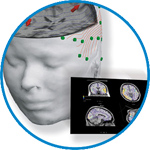- Home
- About ANT
-
Products

asa
asa is a highly flexible EEG/ERP and MEG analysis package with a variety of source reconstruction, signal analysis and MRI processing features.
.jpg)
eego mylab
The new frontier in multimodal brain research. With up to 16 kHz sampling rate, 256 EEG channels and unique software features, eego mylab gives you an unprecedented in-depth understanding of the human brain.

eego sports
eego sports offers complete freedom to collect high-density EEG data, bipolar EMG signals, and a variety of physiological sensor data, wherever and whenever required, with publish quality data in less than 15 minutes!

waveguard net
The waveguard net sets a new standard for research applications requiring high-density EEG data acquisition with quick preparation time, high flexibility, and subject comfort.

visor2
Our new and upgraded visor2 solutions integrate all the latest technologies for navigated rTMS, dual-coil navigation support, EEG-TMS recordings and pre-surgical evaluation for the highest quality in research and clinical procedures.

powerMAG ANT
The PowerMAG ANT 100 rTMS stimulator is designed for the specific needs of high-end TMS applications. Powerful high-frequency TMS as well as high precise single pulse and repetitive pulse protocols are combined in one single device.

xensor
xensor offers the solution for digitization of 3D electrode positions. xensor takes care of the whole procedure; it records, visualizes and stores positions acquired with a dedicated digitizer.

waveguard original
waveguard original is the cap solution for EEG measurements compatible with fMRI, MEG and TMS system. Use of active shielding guarantees performance in even the most demanding environments.

waveguard connect
waveguard connect EEG caps are a perfect match for hospitals and institutes aiming at reliable EEG, maximum uptime and great patient comfort! For optimal signal quality, the electrodes are made of pure, solid tin.

waveguard touch
waveguard touch is a dry electrode EEG cap. The unique Ag/AgCl coated soft polymer electrodes provide stable, research-grade EEG signals while maintaining subject comfort. The combination of these innovative dry electrodes and the industry-leading waveguard cap makes waveguard touch the best solution for dry EEG.

smartmove
smartmove allows planning of a complete TMS session ahead by defining stimulation sites based on anatomical MRI information and functional information like fMRI, PET or EEG/MEG.
Stay - References
- Support
- Events
- News
- Contact Us
You are here
Decoding spatial attention with EEG and virtual acoustic space
Decoding spatial attention with EEG and virtual acoustic space
Decoding spatial attention based on brain signals has wide applications in brain–computer interface (BCI). Previous BCI systems mostly relied on visual patterns or auditory stimulation (e.g., loudspeakers) to evoke synchronous brain signals. There would be difficulties to cover a large range of spatial locations with such a stimulation protocol. The present study explored the possibility of using virtual acoustic space and a visual‐auditory matching paradigm to overcome this issue. The technique has the flexibility of generating sound stimulation from virtually any spatial location. Brain signals of eight human subjects were obtained with a 32‐channel Electroencephalogram (EEG). Two amplitude‐modulated noise or speech sentences carrying distinct spatial information were presented concurrently. Each sound source was tagged with a unique modulation phase so that the phase of the recorded EEG signals indicated the sound being attended to. The phase‐tagged sound was further filtered with head‐related transfer functions to create the sense of virtual space. Subjects were required to pay attention to the sound source that best matched the location of a visual target. For all the subjects, the phase of a single sound could be accurately reflected over the majority of electrodes based on EEG responses of 90 s or less. The electrodes providing significant decoding performance on auditory attention were fewer and may require longer EEG responses. The reliability and efficiency of decoding with a single electrode varied with subjects. Overall, the virtual acoustic space protocol has the potential of being used in practical BCI systems.

 Read more
Read more.jpg)




